Frogs & Toads
Tadpoles
Most people are familiar with tadpoles, the juvenile stage of frogs. These cute critters are often mistaken for fish at first glance, because of the way they swim. Most species of tadpole are difficult to differentiate – although, the bullfrog tadpole can be identified from its sheer size.
In this tadpole stage, the frog has not yet developed lungs and still breathes with its gills, so if you catch one, don’t keep it out of the water for too long!
Bullfrog tadpole
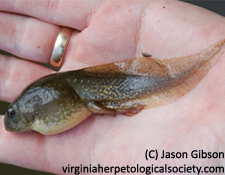
- Much larger than other species’ tadpoles
Frogs
The easiest way to find a frog is to follow its song. Many species can be identified by their call alone. NJ DEP’s Online Field Guide for reptiles and amphibians includes clips of frog calls that can be heard in New Jersey.
American Bullfrog Rana catesbeianus
call
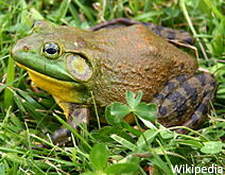
- 3.5″ – 8″ long
- Largest frog in New Jersey
- Brownish green with a pale throat
- Ridge of skin starting from behind the eye and running behind the eardrum
Carpenter Frog Rana virgatipes
call (sounds like repetitive tapping)
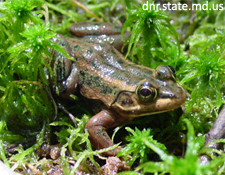
- 1″ – 2.5″ long
- 4 light stripes on the back
Green Frog Rana clamitans
call
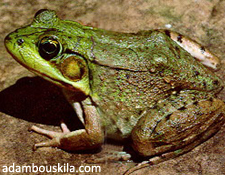
- 2″ – 4″
- Greenish brown with black spots, with pale belly
- Male’s eardrum is larger than the eye; female’s eardrum smaller than the eye
- Dorsolateral ridge present (ridge of skin from behind the eye extends down the back; this is absent in the American Bullfrog)
Spring Peeper Pseudacris crucifer
call

- Small, about 1″ long
- Tan, olive, or grey with dark “X” on the back
Upland Chorus Frog Pseudacris triseriata
call

- 3/4″ – 1 1/2″
- Light stripe on upper lip, and dark stripe running through the eye
- 3 dark stripes running down the back
Toads
Toads generally have wartier skin than frogs, and are commonly brown.
American Toad Bufo americanus
call
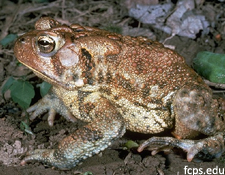
- 1 or 2 warts per dark spot
Fowler’s Toad Bufo fowleri
call
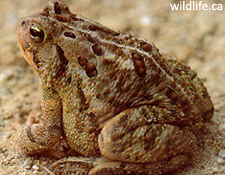
- 3 or more warts per dark spot
- Not commonly found as far north as RUEP
- Chest and belly usually unspotted